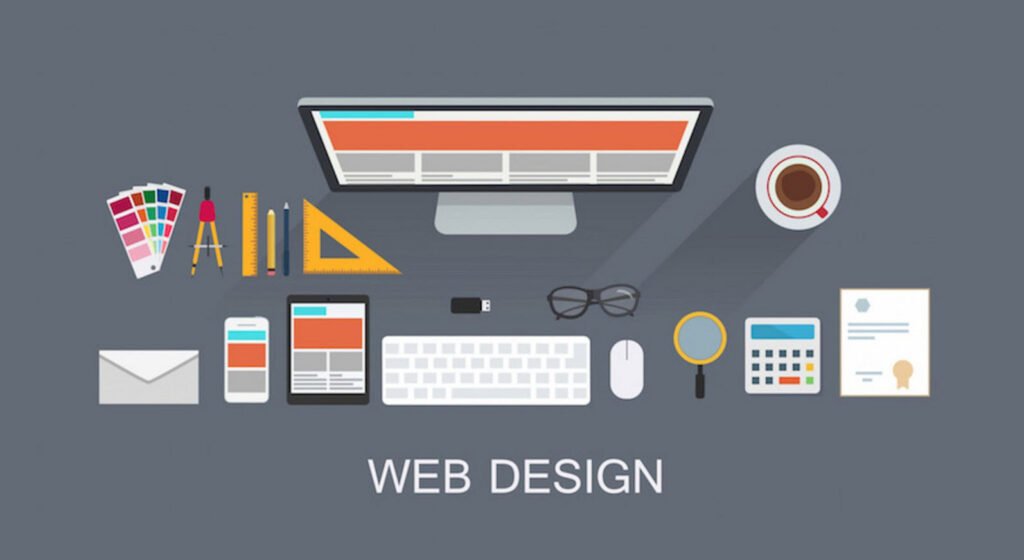
In the digital age, a website serves as the virtual storefront for businesses and individuals alike. It is the first point of contact between users and the content or services a website offers. Creating a website that not only captivates visitors but also provides a seamless user experience requires a careful consideration of various elements.
Let’s delve into the crucial components that constitute a well-designed website.
Good Visual Design
The visual design of a website is its digital aesthetic, representing the brand, products, and services it offers. A visually appealing and, when necessary, professional design creates a positive first impression. The design should align with the purpose of the site and resonate with the target audience.
Screen Resolution
The diversity of devices used to access websites demands that designs are responsive to different screen resolutions. While the average resolution may be 1024 x 768 pixels, the design should adapt gracefully to various screen sizes and orientations to ensure a consistent user experience across devices.
Colour Scheme & Text Formatting
An appropriate color scheme enhances the website’s presentation and conveys its message effectively. Employ 2 or 3 primary colors that align with the site’s purpose. Contrast colors make text legible and easily readable. Select fonts that are readily available on most devices and maintain a standard font size for paragraph text to ensure readability.
Meaningful Graphics
Graphics lend a visually engaging and interactive dimension to a website. However, excessive use of high-resolution images can hinder load times. Striking a balance between visuals and text is crucial. Utilize graphics that enhance the user experience and complement the content without overwhelming the page.
Simplicity
The power of simplicity cannot be understated. A clutter-free design with adequate white space enhances readability and navigability. Overloading a site with complex design elements or animations can detract from the user’s experience and hinder site performance.
Relevant Content
Content is king. It is essential to provide accurate and relevant information that assists visitors in making informed decisions. Combining informative content with an appealing design helps engage users and encourages them to explore the site further.
Navigation
Efficient navigation is the backbone of a user-friendly website. Simplify navigation by placing menu items strategically, ensuring they are easily accessible. Avoid overly elaborate navigation bars and consider incorporating site maps to enhance user exploration. All site components, including hyperlinks and contact forms, should function seamlessly.
Minimal Scroll
Aim to present essential information without requiring excessive scrolling. Users often prefer to access information without the need to scroll extensively. Catering to this preference not only enhances user experience but also aligns with search engine optimization practices.
Consistent Layout
Maintain a consistent layout throughout the website to provide a coherent user experience. Consistency fosters familiarity and enables users to navigate the site more efficiently.
Cross-Platform/Browser Compatibility
In a world with multiple devices and browser options, a website must be compatible across various platforms and browsers. Creating a platform-independent site ensures that visitors have a consistent experience regardless of the device or browser they use.
Conclusion
Designing a website that effectively captures attention, communicates a message, and provides a seamless user experience requires careful consideration of these essential elements. From visual design to navigation and content presentation, each component contributes to the overall success of a website.
By embracing simplicity, compatibility, and user-centric design principles, you can create a website that not only resonates with your audience but also stands the test of time in the dynamic digital landscape.
You may also like:- How To Fix the Crowdstrike/BSOD Issue in Microsoft Windows
- MICROSOFT is Down Worldwide – Read Full Story
- Windows Showing Blue Screen Of Death Error? Here’s How You Can Fix It
- A Guide to SQL Operations: Selecting, Inserting, Updating, Deleting, Grouping, Ordering, Joining, and Using UNION
- Top 10 Most Common Software Vulnerabilities
- Essential Log Types for Effective SIEM Deployment
- How to Fix the VMware Workstation Error: “Unable to open kernel device ‘.\VMCIDev\VMX'”
- Top 3 Process Monitoring Tools for Malware Analysis
- CVE-2024-6387 – Critical OpenSSH Unauthenticated RCE Flaw ‘regreSSHion’ Exposes Millions of Linux Systems
- 22 Most Widely Used Testing Tools








